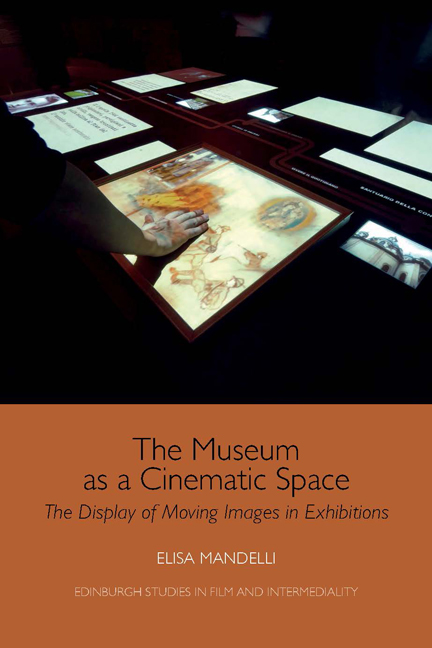Introduction
Published online by Cambridge University Press: 24 October 2019
Summary
Today, art galleries and art, history, science, and cinema museums alike make extensive use of video loops, film installations, and projections, and an impressive amount of scholarly attention has been devoted to the investigation of this tendency. My approach to this phenomenon is both historical and critical. I begin by identifying the coalescence of three major modes of disseminating moving images in museums: the first group of exhibitions treat cinema as a technology or as a specific medium. This category comprises both cinema equipment shown in science and technology or film museums, and film-related objects (such as photographs, posters, or costumes) displayed in exhibitions that focus on the relations between art and cinema or on the work of film directors. Cinema has been used as a medium of visual display since the first decades of the twentieth century: in 1922, for instance, the inventor Will Day lent 500 items from his collection of cinematic apparatuses to the London Science Museum. The Museum exhibited Day's equipment until 1959, when the items were purchased by Henry Langlois, director of the Cinémathèque Française. It was also in the 1920s that intellectuals such as Ricciotto Canudo, Léon Moussinac, and Robert Mallet-Stevens organised pioneering exhibitions that aimed at legitimising cinema as an art form, such as those that took place in Paris at the Salon d'Automne (Autumn Salon) (1921, 1922, and 1923) and at the Musée Galliera (1924), where the exhibition The Art in French Cinema (L'art dans le cinéma français) included enlarged frames, set photographs, and costumes, and was accompanied by film screenings and lectures. The exhibition of cinematic apparatuses remains common in cinema museums as well as in art galleries.
The second group of cinema-related exhibitions includes contemporary art installations involving the use of films and moving images. The foremost examples of this category are cinematic installations created by artists or filmmakers (the boundaries between which are sometimes very blurred), which became widespread in museums and art galleries from the 1990s. In these works, cinema is treated as the source of unlimited iconographic material, narrative techniques, modes of productions, and reception. This mode of display entails a broad series of large-scale collective exhibitions, frequently curated by artists or art critics, which relate more directly to the relationship between art and cinema.
- Type
- Chapter
- Information
- The Museum as a Cinematic SpaceThe Display of Moving Images in Exhibitions, pp. 1 - 14Publisher: Edinburgh University PressPrint publication year: 2019



